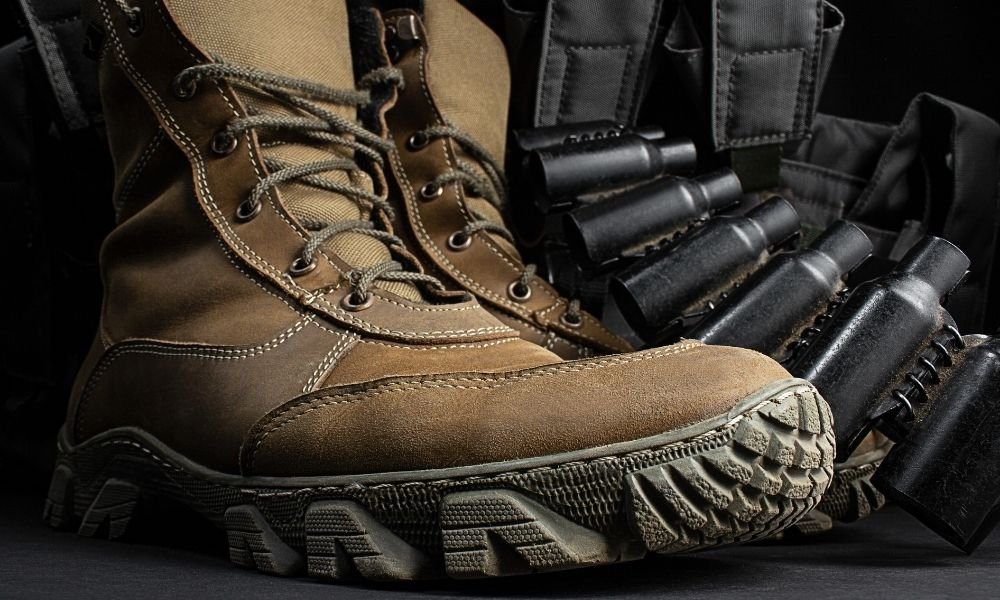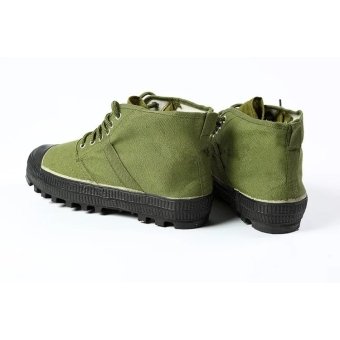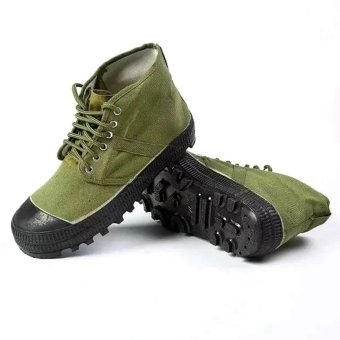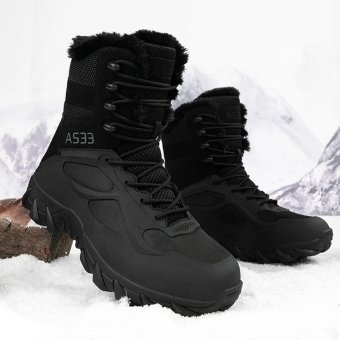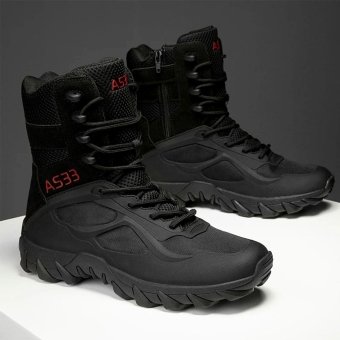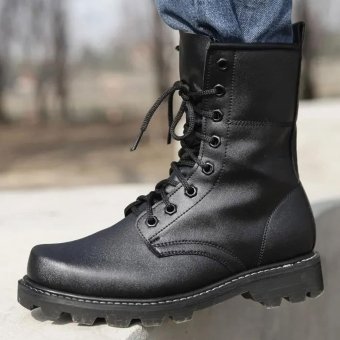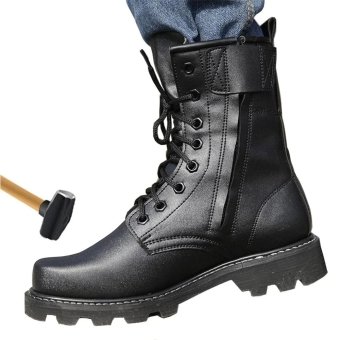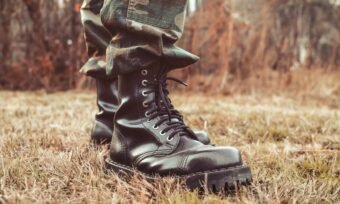Tactical boots aren’t your everyday footwear—they’re built for serious endurance, protection, and support in some of the toughest environments. But what exactly makes tactical boots different? These boots are designed to offer stability, durability, and comfort in unpredictable situations where regular shoes would fall short. They aren’t just heavy-duty boots—they’re designed to be versatile, protective, and comfortable over long hours.
This guide explores what sets tactical boots apart, the materials that make them so resilient, and how they compare to hiking or work boots. Whether you’re in the military, working a tough job, or simply needing durable outdoor footwear, tactical boots might be just what you’re looking for.
Your boots are like your best friend out there. If they fail you, your whole day goes south.
What Is Special About Tactical Boots?


Tactical boots aren’t just regular boots—they’re built with features to handle heavy-duty use. Each element, from its high-rise structure to reinforced soles, is chosen for a specific purpose, catering to users who prioritize functionality over style alone. Tactical boots embody a “form follows function” approach, which means that every design choice serves a purpose. But what exactly makes them stand out?
- Durability That Stands Up to Harsh Conditions: One of the most impressive features of tactical boots is their durability. These boots are made to last through everything from rough, rocky trails to urban rubble and even corrosive substances in certain environments. The uppers of tactical boots are often crafted from full-grain leather, nylon, or a combination of both. Full-grain leather is prized for its resilience—it’s the same material used in traditional military footwear because it can withstand wear and tear while providing a measure of water resistance.
- Enhanced Ankle Support for Stability: When you’re carrying heavy equipment or tackling uneven terrain, stability is essential. That’s why tactical boots are usually designed to sit high on the ankle, often 8 inches or more, providing firm support. This added height isn’t just for show; it stabilizes your ankle to prevent strains, twists, or injuries that could sideline you for days.
- Grip That Holds Up on Any Terrain: Traction is another key feature that sets tactical boots apart. Many boots in this category have outsoles made from durable rubber, which provides slip resistance and better traction on various surfaces. Tactical boot soles often feature aggressive tread patterns designed to grip mud, gravel, wet rocks, and even oily surfaces.
- Weather Resistance for All Climates: Tactical boots are often designed to withstand a variety of weather conditions. Some come with insulation for cold environments, helping to keep your feet warm even in freezing temperatures, while others offer breathability and moisture-wicking properties to prevent overheating in hot climates.
Why Are Army Boots So High?
Army boots are high for a few key reasons, all aimed at maximizing support, protection, and performance in challenging conditions. The extra height provides crucial ankle support, which is essential for soldiers who may be moving quickly over uneven or rough terrain. This support helps prevent ankle injuries, offering stability during intense physical activities, whether it’s hiking, climbing, or navigating rocky ground.
The high structure wraps around the ankle, which helps stabilize your foot in every step. If you’ve ever twisted an ankle while carrying a heavy load, you know why this matters.
The height also acts as a barrier, protecting your feet from mud, sand, and even bugs that might otherwise get in through a shorter boot. In jungle or desert conditions, this extra coverage can be a lifesaver, keeping your feet drier and less prone to cuts or bites.
Why Are Combat Boots So Comfortable?

Combat boots might look tough, but they’re designed with comfort in mind. Over the years, they’ve evolved to balance durability and support, allowing wearers to be on their feet all day without discomfort. Here’s a breakdown of what makes these boots so surprisingly comfortable:
- Cushioned Insoles for Long-Hour Wear: The insoles in most combat boots are all about cushioning. They’re often made from materials like EVA or memory foam, which help absorb shock and take the strain off your feet, ankles, and knees. This is especially important if you’re carrying a heavy load or hiking on uneven ground. These insoles make each step easier on your joints, so long days on your feet feel a lot less taxing.
- Supportive Structure Without Sacrificing Flexibility: Combat boots provide strong arch support, which reduces the strain on your feet, ankles, and back, especially if you’re standing or carrying weight for hours. Most boots have insoles that contour to the natural shape of your foot, giving you solid support that doesn’t feel rigid or uncomfortable. They’re firm where they need to be but still let you move freely.
- Durable Yet Flexible Uppers: While combat boots are built to be tough, they’re flexible enough to let your feet move naturally. Materials like leather and nylon give you protection without feeling like you’re in stiff, immovable boots. You get the right balance between rigidity and flexibility, so you can bend, twist, and walk easily without feeling weighed down.
- Adjustable Fit with Lacing System:The lacing on combat boots is more than just functional; it’s key to comfort. Being able to adjust the laces allows you to customize the fit, which helps prevent blisters and sore spots. A snug but comfortable fit means your feet stay stable and don’t rub, so you can head out on a long walk or even a full day of activity without worry.
- Breathable, Moisture-Wicking Materials: No one wants sweaty, uncomfortable feet, and combat boots address this with breathable linings and moisture-wicking fabrics. These materials allow airflow, which helps keep your feet cool and dry, even in warmer weather. It also means less chance of blisters or bad odors after hours of wear.
Do Tactical Boots Have Steel Toes?
No, not every pair of tactical boots has steel toes, but if you need that extra layer of protection, there are plenty of options out there. Steel toes are ideal if you’re working in risky environments where there’s a chance of heavy objects falling—think construction sites or warehouses. For military personnel or first responders, having that added protection can make a real difference.
But let’s be honest—steel toes do add a bit of weight, which might slow you down. If you’re after protection without the heft, many tactical boots now use composite materials like carbon fiber or Kevlar. These offer similar protection to steel but are much lighter, giving you the best of both worlds.
What Materials Are Tactical Boots Made Of?

Tactical boots aren’t just thrown together; they’re made from materials chosen for durability, comfort, and performance. Here’s a quick look at what typically goes into them:
- Leather: The classic choice for tactical boots, leather is tough, naturally water-resistant, and ready for rough conditions. Full-grain leather, in particular, is extra durable and perfect for withstanding lots of wear.
- Nylon and Synthetic Fabrics: To make boots lighter and more breathable, manufacturers often mix leather with nylon or synthetic materials. This combo helps keep things cool, so your feet aren’t roasting in the heat.
- Rubber Soles: Rubber is the go-to for boot soles because it grips well on just about anything—wet, muddy, or rocky surfaces. Some tactical boots even have special rubber compounds for an extra-secure grip on challenging terrain.
- Foam and EVA Midsoles: Comfort matters, especially when you’re on your feet all day. Foam or EVA midsoles add cushioning and absorb shock, helping you stay comfortable and reducing foot fatigue so you can keep going without discomfort.
What Are Combat Boot Soles Made Of?
The soles of tactical boots are typically made from durable rubber, which offers great traction and can handle rough terrain. The tread patterns are designed to grip uneven surfaces, preventing slipping even in mud or wet environments. Some boots even come with oil-resistant soles, which is a feature appreciated by people who work around machinery or in factories.
For shock absorption, many boots use EVA or polyurethane in the midsoles, which makes them comfortable for prolonged wear. This combination of materials and construction is all about balance—making sure your boots stay tough on the outside while being cushioned on the inside.
What Are Combat Boot Laces Made Of?
Combat boot laces are typically made from durable materials such as nylon, polyester, cotton, and paracord. Typically, combat boot laces are crafted from sturdy materials like nylon or polyester, known for their resilience against abrasion and resistance to water.
Combat boot laces aren’t just there to secure the boot; they’re a crucial element of the boot’s overall durability and functionality. Some boots are equipped with paracord laces, which are extra durable and can double as emergency gear in survival situations.
How Long Do Military Boots Last?


The lifespan of military boots can vary widely based on how they’re used and maintained. On average, a pair of high-quality tactical boots can last from six months to two years with regular use.
However, proper care can extend their life significantly. Cleaning, drying, and conditioning leather boots prevent cracking and prolong the material’s integrity. Regularly replacing worn insoles and outsoles can also improve longevity.
Regular care and maintenance are key to extending the life of your military boots. Here are some effective tips to help your boots last longer:
- Clean Them Regularly – After each use, remove dirt, mud, and debris with a brush or damp cloth. For stubborn stains, use a mild soap and water solution. Regular cleaning prevents material deterioration and keeps your boots looking good.
- Dry Them Properly – If your boots get wet, allow them to dry naturally at room temperature. Avoid direct heat sources like radiators or hair dryers, as high heat can cause the leather or synthetic material to crack. Instead, stuff them with newspaper or a towel to absorb moisture and help maintain their shape.
- Condition Leather Boots – For leather boots, applying a leather conditioner every few months helps keep the material supple and prevents cracking. Conditioning also helps maintain water resistance and protects the leather from drying out over time.
- Waterproof Them – Even if your boots come with some level of water resistance, applying a waterproof spray or wax can provide an extra layer of protection. This is especially helpful for outdoor use, as it reduces the damage from rain, mud, and moisture.
- Rotate Usage – If you rely on military boots daily, consider rotating between two pairs. This gives each pair time to air out and recover, reducing overall wear and tear.
- Store Them Properly – Store your boots in a cool, dry place away from direct sunlight to avoid material degradation. Using a boot tree can also help maintain their shape and prevent creasing.
What Are Tactical Boots Good For?

Tactical boots are incredibly versatile. Here’s a rundown of some of their top uses:
- Military and Law Enforcement: These boots provide essential protection and stability for those on patrol or in the field. The rugged sole, ankle support, and durable build make them ideal for high-stress environments.
- Outdoor Adventures: For hikers and hunters, tactical boots offer excellent traction, waterproofing, and ankle support. Unlike regular hiking boots, tactical boots can handle rough terrains and unpredictable weather with ease.
- Construction and Industrial Work: Many tactical boots have steel toes or other protective features that make them a solid choice for construction and industrial settings.
- Emergency Services: Firefighters, paramedics, and other first responders need reliable boots that won’t fail them. Tactical boots provide the protection, grip, and comfort required for long shifts.
What Are The Disadvantages Of Combat Boots?
While combat boots are designed to be durable and supportive, there are a few downsides to consider, especially if you’re not using them for military or tactical purposes.
- Weight and Bulkiness – Combat boots are often heavier than regular shoes because they’re made with thicker materials for durability. This added weight can be tiring if you’re walking long distances or not used to carrying extra weight on your feet.
- Reduced Breathability – Many combat boots, particularly leather or waterproof versions, aren’t as breathable as lighter boots. This can lead to sweaty feet and discomfort, especially on hot days, causing potential issues like odor or even skin irritation.
- Limited Flexibility – Combat boots are built with strong support, but that can make them feel stiff. If you need to bend, crouch, or move quickly, the lack of flexibility might be a bit restrictive compared to more casual boots designed for ease of movement.
- Not Ideal for Casual Wear – While combat boots are perfect for tough environments, they can look too militaristic or heavy for everyday outfits. If you’re looking for something that easily transitions into casual or office wear, they might not always be the best choice.
What Is the Difference Between Tactical and Hiking Boots?


| Feature | Tactical Boots | Hiking Boots |
| Primary Purpose | Designed for military, law enforcement, or rugged work environments; built for durability and support in challenging conditions | Designed specifically for trail walking and mountain terrain; optimized for comfort and varied landscapes |
| Material | Often made of tough leather, nylon, or synthetic materials for durability and abrasion resistance | Typically constructed from lightweight, breathable materials such as mesh, leather, or synthetic blends |
| Weight | Generally heavier due to protective features like reinforced toes, ankle support, and thicker outsoles | Lighter in weight to minimize fatigue on long hikes and varied terrain |
| Protection | Provides high-level protection, often with reinforced toes, thick soles, and water-resistant coatings | Moderate protection; often features water resistance but with less emphasis on impact protection |
| Flexibility | Designed to be rigid to offer stability; may feel stiffer initially | More flexible to allow natural movement on uneven terrain |
| Durability | Extremely durable, built to withstand harsh environments and extensive wear | Durable for trail use but may wear out faster under extreme or industrial conditions |
| Use in Urban Settings | Often suitable for urban and tactical situations, such as law enforcement or security work | Primarily for outdoor use, although some models are suitable for light urban use |
Where To Buy Tactical Boots?
Kula Tactical is a trusted source of high-quality tactical boots designed to meet the needs of outdoor enthusiasts, military personnel, and security professionals alike. At Kula Tactical, you’ll find a wide selection of boots specifically crafted for durability, comfort, and performance.
Whether you’re searching for waterproof options, lightweight boots for high mobility, or heavy-duty boots that can endure tough environments, Kula Tactical offers an extensive range to suit diverse needs. They carry options in various materials and designs, from traditional leather to advanced synthetic and nylon blends, ensuring there’s a perfect fit for every climate and situation.
Wrap Up

More intels about our Military Boots
Explore our collection of tactical boots, built for performance in any environment. Ideal for military, law enforcement and all your outdoor activities!
To sum it up, tactical boots aren’t just your run-of-the-mill footwear—they’re designed for people who need reliable support, protection, and durability in tough situations. Whether you’re facing rough terrain, working in the field, or navigating city streets, these boots are built to perform.
If you’re in the market for a pair, Kula Tactical is a great place to check out. They’re experts in tactical gear and offer boots that cover everything from comfort for all-day wear to heavy-duty protection for the most demanding environments.

